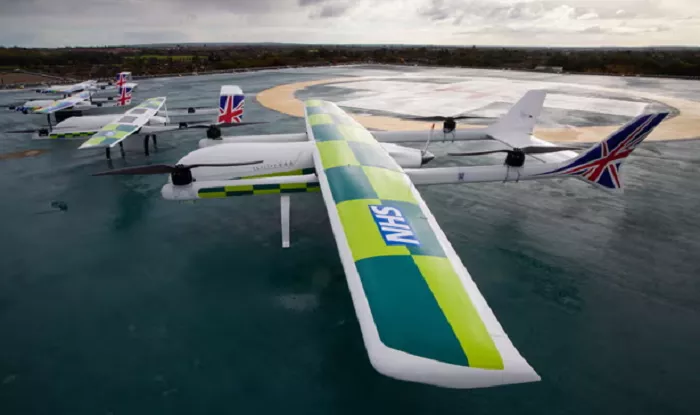The UK is set to allow drones to carry out NHS-related missions, inspect offshore wind turbines, and supply oil rigs by 2026, as part of a new regulatory regime.
David Willetts, the head of the newly-formed government unit overseeing the deployment of new technologies in the UK, highlighted the potential for drones to be used in various situations, particularly in remote areas, if proposed regulatory changes go through next year.
Ministers recently announced plans to allow drones to fly beyond the operator’s line of sight, a change that could make long-distance drone flights possible. Current regulations prevent drones from flying “beyond visual line of sight,” limiting their use for extended journeys.
Willetts, who chairs the Regulatory Innovation Office (RIO), told the Guardian that the regulatory changes could come as soon as 2026. However, he emphasized that they would initially apply in “atypical” aviation environments, such as remote areas and over open water.
For the NHS, Willetts sees significant opportunities. “It’s great for drone operators commercially, but it’s also great for services like the NHS,” he said. Drones could deliver medicines to remote GPs and patients, as well as transport blood samples to hospitals for testing.
Regions like the Scottish Highlands and islands, as well as the farming sector, could benefit from these changes. Additionally, drones could be deployed under the government’s safer streets fund, which supports initiatives against crime and antisocial behavior.
“You could imagine that, for the safer streets initiative, drones might be used by the police to enhance public safety,” Willetts suggested.
Willetts also noted that the definition of an “atypical” air environment could be expanded to enable drones to operate over long distances, covering more airspace. However, for drones to operate in busier airspace, advancements in technology and standards will be required to ensure aircraft are aware of their presence.
He also cited the potential for drones to inspect offshore wind turbines and deliver supplies to oil rigs by 2026. While current regulations require a line-of-sight for turbine inspections, these changes could ease such restrictions.
As part of the announcement, the government revealed it would allocate £16.5 million to the Civil Aviation Authority to develop a regulatory framework for beyond-line-of-sight drone operations. Willetts argued that current regulations have become overly restrictive.
The NHS is already using drones to deliver urgent pathology items, such as blood samples, in central London. A trial is taking place between Guy’s Hospital and a lab at St Thomas’ Hospital, in partnership with drone companies Apian, a UK startup co-founded by NHS doctors, and Wing, owned by Google’s parent company Alphabet. A similar trial is also underway in Northumberland.
UK Technology Secretary Peter Kyle said the regulatory changes would help the country “lead the world in new technologies.” He added, “These are exactly the kinds of barriers we’re determined to break down through the Regulatory Innovation Office, cutting red tape so drones can safely deliver supplies or inspect offshore wind turbines without costly workarounds like putting someone in a boat.”


